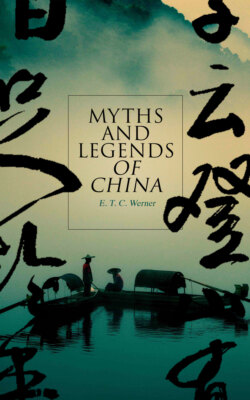Читать книгу Myths and Legends of China - E. T. C. Werner - Страница 11
На сайте Литреса книга снята с продажи.
Inorganic Environment
ОглавлениеAt the beginning of their known history the country occupied by the Chinese was the comparatively small region above mentioned. It was then a tract of an irregular oblong shape, lying between latitude 34° and 40° N. and longitude 107° and 114° E. This territory round the elbow of the Yellow River had an area of about 50,000 square miles, and was gradually extended to the sea-coast on the north-east as far as longitude 119°, when its area was about doubled. It had a population of perhaps a million, increasing with the expansion to two millions. This may be called infant China. Its period (the Feudal Period) was in the two thousand years between the twenty-fourth and third centuries B.C. During the first centuries of the Monarchical Period, which lasted from 221 B.C. to A.D. 1912, it had expanded to the south to such an extent that it included all of the Eighteen Provinces constituting what is known as China Proper of modern times, with the exception of a portion of the west of Kansu and the greater portions of Ssuch'uan and Yünnan. At the time of the Manchu conquest at the beginning of the seventeenth century A.D. it embraced all the territory lying between latitude 18° and 40° N. and longitude 98° and 122° E. (the Eighteen Provinces or China Proper), with the addition of the vast outlying territories of Manchuria, Mongolia, Ili, Koko-nor, Tibet, and Corea, with suzerainty over Burma and Annam—an area of more than 5,000,000 square miles, including the 2,000,000 square miles covered by the Eighteen Provinces. Generally, this territory is mountainous in the west, sloping gradually down toward the sea on the east. It contains three chief ranges of mountains and large alluvial plains in the north, east, and south. Three great and about thirty large rivers intersect the country, their numerous tributaries reaching every part of it.
As regards geological features, the great alluvial plains rest upon granite, new red sandstone, or limestone. In the north is found the peculiar loess formation, having its origin probably in the accumulated dust of ages blown from the Mongolian plateau. The passage from north to south is generally from the older to the newer rocks; from east to west a similar series is found, with some volcanic features in the west and south. Coal and iron are the chief minerals, gold, silver, copper, lead, tin, jade, etc., being also mined.
The climate of this vast area is not uniform. In the north the winter is long and rigorous, the summer hot and dry, with a short rainy season in July and August; in the south the summer is long, hot, and moist, the winter short. The mean temperature is 50.3° F. and 70° F. in the north and south respectively. Generally, the thermometer is low for the latitude, though perhaps it is more correct to say that the Gulf Stream raises the temperature of the west coast of Europe above the average. The mean rainfall in the north is 16, in the south 70 inches, with variations in other parts. Typhoons blow in the south between July and October.
